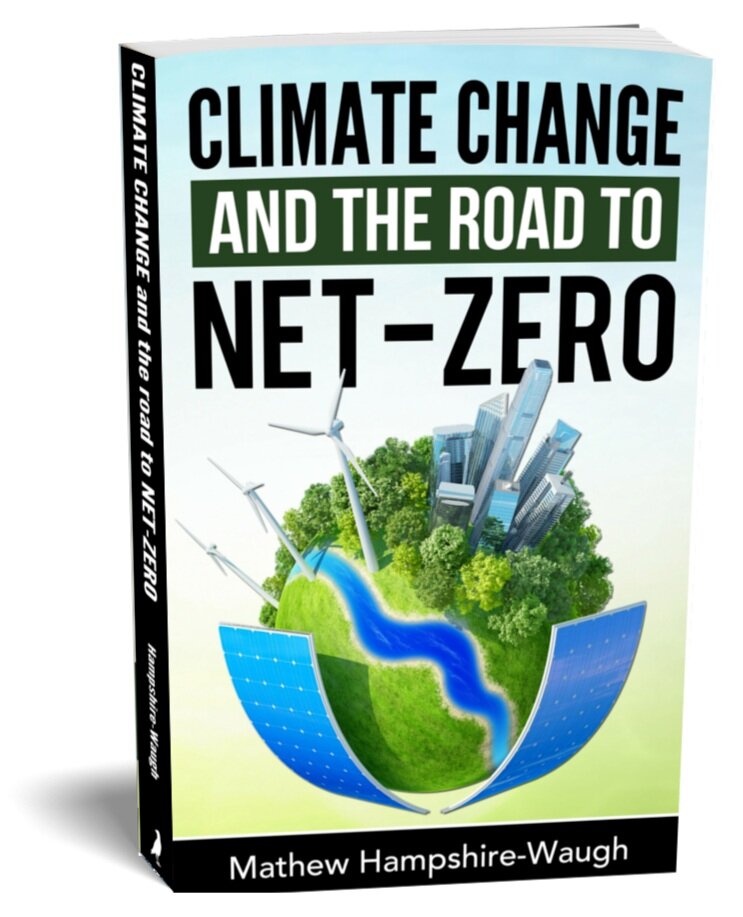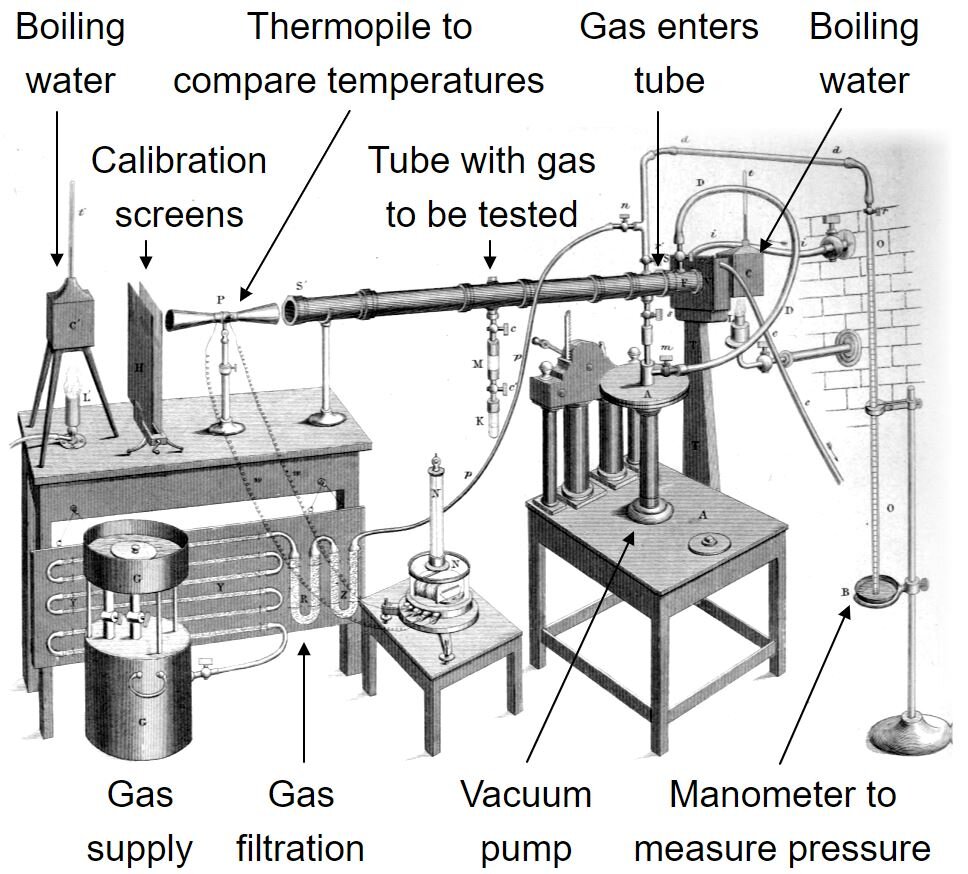The Carbon Cycle and Ice Ages
In this post from NET-ZERO:
How does the carbon cycle control CO2 concentrations in the atmosphere? The movement of carbon dioxide in and out of the atmosphere by natural processes.
What are Milankovitch cycles? Changes to the spin, tilt, and orbit of the Earth and how this affects temperatures.
What caused ices ages over the last million years? How the carbon cycle and Milankovitch cycles interacted to drive ice ages and warmer interglacial periods.
The Carbon Cycle
The greenhouse effect is the physical process whereby adding more carbon dioxide (or other greenhouse gases) to the atmosphere acts to trap more of the sun’s energy and the temperature of the Earth must increase to rebalance the energy flows. But if carbon dioxide is the atmospheric thermostat, what controls the CO2?
This is where climate science gets even more complex. The Earth’s temperature and the concentration of CO2 in the atmosphere are determined by several biological, chemical, and physical factors; many of which interact and may have both positive and negative or amplifying and dampening feedback cycles.
Amplifying feedback reacts to an initial change in temperature or CO2 by further increasing the change.
Dampening feedback is the opposite and reduces the magnitude of the original change.
Here are some of the natural drivers of the CO2 concentrations and temperature:
Rock weathering traps CO2 from the atmosphere in the Slow Carbon Cycle: Carbon dioxide gas in the atmosphere dissolves in rainwater forming carbonic acid (H2CO3) which slowly dissolves rock. The net impact of rock weathering is to remove CO2 from the atmosphere, trap it in chemical solution, and transport the carbon down river to the ocean where, either directly or through the formation of biological shells, the CO2 becomes buried as sediment in the deep ocean. Rock weathering is the first part of the slow carbon cycle taking half a million years to move carbon from atmosphere, land, and ocean to rock. The slow carbon cycle will act to rebalance temperatures over geological time – whereby higher temperatures and more water vapour drives faster weathering of rock, reducing levels of CO2 and gradually lowering temperatures – a dampening mechanism but over hundreds of millions of years.
Tectonic and volcanic activity re-release CO2 from rock in the Slow Carbon Cycle: The Earth’s crust consists of seven large and many smaller tectonic plates which have been moving for the last 3.5 billion years. As the plates shift, at a few inches per year, this creates subduction zones (one plate moves under the other) and divergent margins (where new sea floor forms). This activity reshapes continents, creates mountain ranges, and leads to earthquakes, sea vents, and volcanic activity. The amount of tectonic activity affects the rate at which subducted rock chemically transforms under heat and pressure to release silicate and CO2. Volcanic eruptions and continental rifts release the silicate and CO2 back into land and atmosphere. This is the second part of the slow carbon cycle which returns the carbon trapped in rock back into the atmosphere over millions of years.
The ocean physical carbon pump – the not so slow carbon cycle: The ocean can absorb CO2 directly through diffusion from the air. The CO2 reacts with water to form hydrogen and bicarbonate ions making the ocean more acidic. The physical carbon pump is the process where cold dense water sinks and transports the dissolved bicarbonate into the deep ocean before up-swelling currents return the carbon to warmer water and then return it to the atmosphere over thousands of years. Wind, currents, salinity, temperature, and CO2 concentrations in the atmosphere all affect the net direction and rate of flow through the physical carbon pump. Typically, higher atmospheric CO2 concentrations will increase ocean uptake, but warmer water holds less CO2, so the ocean physical carbon pump acts as a dampener of initial CO2 led change but amplifies an initial temperature led change. Every 1⁰C increase in ocean temperature reduces CO2 uptake by 4%, every 100 ppm concentration increase in CO2 reduces the potential for further ocean uptake by 15%.
The land based biological carbon pump – the Fast Carbon Cycle: Plants utilise the sun’s energy to grow through photosynthesis which takes CO2 from the atmosphere, combines the CO2 with water, and produces energy-rich carbohydrates and by-product oxygen. Plants will use this energy through respiration which takes oxygen and carbohydrates and releases CO2. The combined effect of photosynthesis and respiration is to uptake CO2 in growing plants which store the carbon in their trunks, stems, and roots. Once the vegetation dies, the carbon enters the soil where it either remains bound with a mix of rock minerals or is decomposed by microbes which release the carbon back into the atmosphere. Atmospheric gases, climate, and temperature all impact the flux of carbon in and out of vegetation and soil. Typically, plants will grow faster at increasing CO2 concentrations and up to 20-25⁰C average temperatures, beyond which lack of water will become detrimental to growth leading to decomposition and net carbon release. At higher temperatures, soil respiration also increases releasing more CO2. Vegetation will therefore act as a dampener of initial CO2 led change but may amplify larger temperature changes.
The ocean’s biological carbon pump – the Fast Carbon Cycle: Algae or phytoplankton in the ocean serves as the start of the marine food chain. Residing in the upper 100 metres of water these single-celled organisms or seaweeds grow using sunlight and CO2 for photosynthesis, trapping atmospheric carbon in their biomass. This biomass ends up eaten by other marine life, decays, and returns to the atmosphere, or it can sink to the bottom of the ocean and eventually form sedimentary rock. Although marine biomass does not store much carbon itself, it is critical for moving carbon from the upper ocean to the deep ocean. Water temperatures play a role in the carbon flux. If the ocean becomes warmer, the upper 100 metres becomes increasingly unable to mix with the deeper ocean as the temperature gradient, or thermocline layer, increasingly separates the two (typically at above 10⁰C). This limits the mixing of nutrients and oxygen for algae to grow, creating dead zones. Higher temperatures favour carbon release and colder temperatures favour carbon uptake. More atmospheric CO2 creates faster algae growth. The ocean biological pump acts as a dampener of initial CO2 led change, but acts as an amplifier of initial temperature led change.
Earth’s proximity to the sun: Day and night come and go as the Earth spins on its axis. Seasons change as the tilt of the planet directs each hemisphere closer or further from the sun throughout its annual orbit. But neither the spin, the tilt, nor the orbital path around the sun are constant. The planet’s spin undergoes a 26,000-year wobble around its axis which changes the intensity of seasons for the two hemispheres. The planet’s tilt switches between 21.8⁰ and 24.4⁰, every 41,000 years, changing the intensity of summer and winter. The Earth’s orbit around the sun is slightly elliptical with the sun off centre, creating a 7% difference in solar irradiance over 100,000-to-400,000-year cycles. Together the impact of these changes are known as Milankovitch Cycles and can trigger heating or cooling events over thousands of years which in turn impact the carbon flux between rock, vegetation, and ocean, further amplifying the warming or cooling.
Solar forcing variation: The sun’s intensity changes through geological time. When the Earth first formed, the sun’s intensity was 30% less than today (1.36 kW per square metre). In one billion years the sun will be 50% hotter than today (2 kW per square metre). On a shorter timescale the sun’s intensity changes through the 11-year solar cycle as the magnetic poles swap and the number of sunspots, flares, and coronal loops change the energy output by about 1 watt per square metre or 0.1% intensity peak to trough. This impacts temperatures by ±0.1⁰C.
El Nino southern oscillation: This is the periodic cycle of warming (El Nino) and cooling (La Nina) sea surface temperatures that occur in parts of the Pacific Ocean every two to seven years. The changing sea temperature impacts rainfall patterns and can drive extreme weather events and reverse low-lying trade winds, impacting global temperatures by up to ±0.2⁰C.
Combining the impact of the slow and fast carbon cycles with the changing proximity of the Earth to the sun alongside the changes to atmospheric chemistry, ocean chemistry, cloud cover, ocean circulation, and solar variation – including all feedback loops between each process – and you start to understand why the Earth is a complex system. Broadly, CO2 will regulate over geological time but changes in volcanic activity, solar variation, and ocean/land systems create fluctuations on more human timescales.
The Rise and Fall of Ice Ages
Ice cores provide a more detailed record of climate over the last 800,000 years; a period characterised by alternating ice ages and warmer interglacial periods. Serbian mathematician Milutin Milankovitch theorised in 1941 that tilts, wobbles, and the slight elliptical shape of Earth’s orbit around the sun, could create periodic changes in solar intensity and push Earth in and out of ice ages.[i] It wasn’t until 1976 when Jim Hays, Nick Shackleton, and John Imbrie published their seminal work on marine sediment, that so-called Milankovitch cycles were proven to match the Earth’s climate record.
Ice ages may be initiated or ended by the amount of sunlight reaching the planet, but the correlation between temperature and CO2 has still held tight. Small solar induced warming or cooling cycles are amplified by the response from rising or falling carbon dioxide concentrations.
The exact process is still uncertain but, broadly, solar intensity declines, temperatures start to drop, ice sheets grow and reflect more of the sun’s energy, thus cooling the planet further (ice-albedo). The upper and deep oceans start to mix and increasingly more CO2 is taken from the atmosphere by a stronger biological (growing plankton) and physical carbon pump. Two thirds of the cooling is led by less sunlight and ice-albedo and one third by lower CO2 and greenhouse gases. Ice ages have seen polar temperatures as low as 10⁰C below current averages. Through these glacial periods ice sheets extend from the poles, covering up to one-third of land on Earth and lowering sea levels by over 100 metres. Much of North America and Europe would have been under hundreds of metres, if not kilometres, of dense ice.
Once Earth passes its orbital low, the solar intensity starts to slowly increase and temperatures rise once again. Ice sheets recede and reflect less sunlight leaving more heat energy in the Earth’s lower atmosphere. Melting ice releases decaying vegetation and warmer oceans hold progressively less life and less carbon. Atmospheric CO2 increases and further amplifies the initial warming. The Earth enters a warmer interglacial period, as we are in today. Ice sheets retreat to the poles, the tropics expand, and oceans turn from green to blue as up to 80% of surface waters reduce their mixing with the deep ocean and support less life.
Changing the Atmosphere
Humans are now adding greenhouse gases to the atmosphere faster than any other natural event in at least 66 million years. We have already pushed CO2 concentrations over one third higher than they have been in the last million years.
Based on Milankovitch cycles the Earth should naturally be cooling again, however over the last 100 years we have recorded a temperature rise of over 1⁰C due to human emissions of greenhouse gases. Should we make no change to our existing systems the planet will warm by at least 3⁰C this century and 4.5⁰C by the middle of the next bringing with it water stress, hunger, natural catastrophes, productivity declines and irreversible changes to the natural world.






































